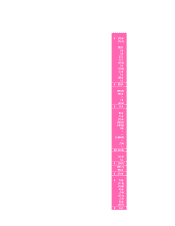Red Lobster 2016 Annual Report Download - page 23
Download and view the complete annual report
Please find page 23 of the 2016 Red Lobster annual report below. You can navigate through the pages in the report by either clicking on the pages listed below, or by using the keyword search tool below to find specific information within the annual report.
MANAGEMENT’S DISCUSSION AND ANALYSIS
OF FINANCIAL CONDITION AND RESULTS OF OPERATIONS
DARDEN
DARDEN RESTAURANTS, INC. • 2016 ANNUAL REPORT 19
Our fixed-charge coverage ratio, which measures the number of times
each year that we earn enough to cover our fixed charges, amounted to
2.7 times and 1.7 times, on a continuing operations basis, for the fiscal years
ended May 29, 2016 and May 31, 2015, respectively. Our adjusted debt to
adjusted total capital ratio (which includes 6.25 times the total annual mini-
mum rent on a consolidated basis of $248.5 million and $182.1 million for
the fiscal years ended May 29, 2016 and May 31, 2015, respectively, as
components of adjusted debt and adjusted total capital) was 53 percent and
55 percent as of May 29, 2016 and May 31, 2015, respectively. We include
the lease-debt equivalent and contractual lease guarantees in our adjusted
debt to adjusted total capital ratio reported to shareholders, as we believe its
inclusion better represents the optimal capital structure that we target from
period to period and because it is consistent with the calculation of the
covenant under our Revolving Credit Agreement.
Based on these ratios, we believe our financial condition is strong.
The composition of our capital structure is shown in the following table.
May 29, May 31,
(in millions, except ratios)
2016 2015
CAPITAL STRUCTURE
Current portion long-term debt $ — $ 15.0
Long-term debt, excluding unamortized
discount and issuance costs 450.0 1,466.6
Capital lease obligations 52.0 54.5
Total debt $ 502.0 $1,536.1
Stockholders’ equity 1,952.0 2,333.5
Total capital $2,454.0 $3,869.6
CALCULATION OF ADJUSTED CAPITAL
Total debt $ 502.0 $1,536.1
Lease-debt equivalent 1,553.1 1,138.1
Guarantees 154.2 147.7
Adjusted debt $2,209.3 $2,821.9
Stockholders’ equity 1,952.0 2,333.5
Adjusted total capital $4,161.3 $5,155.4
CAPITAL STRUCTURE RATIOS
Debt to total capital ratio 20% 40%
Adjusted debt to adjusted total capital ratio 53% 55%
Net cash flows provided by operating activities from continuing
operations were $820.4 million, $874.3 million and $555.4 million in fiscal
2016, 2015 and 2014, respectively. Net cash flows provided by operating
activities include net earnings from continuing operations of $359.7 million,
$196.4 million and $183.2 million in fiscal 2016, 2015 and 2014, respec-
tively. Net cash flows provided by operating activities from continuing
operations decreased in fiscal 2016 primarily due to current period activity
of taxable timing differences and the timing of inventory purchases, offset
by higher net earnings from continuing operations. Net cash flows provided
by operating activities from continuing operations increased in fiscal 2015
primarily due to higher net earnings from continuing operations, a reduction
in current period continuing operations income taxes paid and the timing
of inventory purchases.
Net cash flows provided by investing activities from continuing
operations were $75.4 million in fiscal 2016 compared to net cash flows
used in investing activities from continuing operations of $235.1 million
and $436.3 million in fiscal 2015 and 2014, respectively. Proceeds from the
disposal of land, buildings and equipment of $325.2 million in fiscal 2016
reflect the impact of closed sale-leaseback transactions. Capital expenditures
incurred principally for building new restaurants, remodeling existing restau-
rants, replacing equipment, and technology initiatives were $228.3 million
in fiscal 2016, compared to $296.5 million in fiscal 2015 and $414.8 million
in fiscal 2014. The decreasing trend of expenditures from fiscal 2014
to fiscal 2016 results primarily from decreases in remodel and new
restaurant activity.
Net cash flows used in financing activities from continuing operations
were $1.12 billion in fiscal 2016, compared to $1.78 billion in fiscal 2015
and $179.2 million in fiscal 2014. Net cash flows used in financing activities
in fiscal 2016 reflected long-term debt payments of $1.10 billion, including
repurchase premiums and make-whole provisions, dividend payments of
$268.2 million and share repurchases of $184.8 million, partially offset by
the $315.0 million cash dividend received by us from Four Corners and
proceeds from the exercise of employee stock options. Net cash flows used
in financing activities in fiscal 2015 reflected long-term debt payments of
$1.07 billion, including repurchase premiums and make-whole provisions,
dividend payments of $278.9 million, share repurchases of $502.3 million
and net repayments of short-term debt $207.6 million, partially offset by
proceeds from the exercise of employee stock options. Net cash flows
used in financing activities in fiscal 2014 included dividend payments
of $288.3 million, partially offset by net proceeds from the issuance
of short-term debt and from the exercise of employee stock options.
Our defined benefit and other postretirement benefit costs and liabilities
are determined using various actuarial assumptions and methodologies pre-
scribed under Financial Accounting Standards Board Accounting Standards
Codification Topic 715, Compensation – Retirement Benefits and Topic 712,
Compensation – Nonretirement Postemployment Benefits. We use certain
assumptions including, but not limited to, the selection of a discount rate
and expected long-term rate of return on plan assets. We set the discount
rate assumption annually for each plan at its valuation date to reflect the
yield of high-quality fixed-income debt instruments, with lives that approxi-
mate the maturity of the plan benefits. At May 29, 2016, our discount rate
was 4.2 percent and 4.0 percent, respectively, for our defined benefit and
postretirement benefit plans. The expected long-term rate of return on plan
assets is based upon several factors, including our historical assumptions
compared with actual results, an analysis of current market conditions, asset
allocations and the views of leading financial advisers and economists. Our
expected long-term rate of return on plan assets for our defined benefit plans
was 6.5 percent for fiscal year 2016, 7.0 percent for fiscal year 2015 and
8.0 percent for fiscal year 2014. In fiscal 2016, we made defined benefit
plans contributions of approximately $25.4 million, which included a volun-
tary funding contribution of $25.0 million. We made defined benefit plans
contributions of approximately $0.4 million and $0.4 million in fiscal years
2015 and 2014, respectively.
























